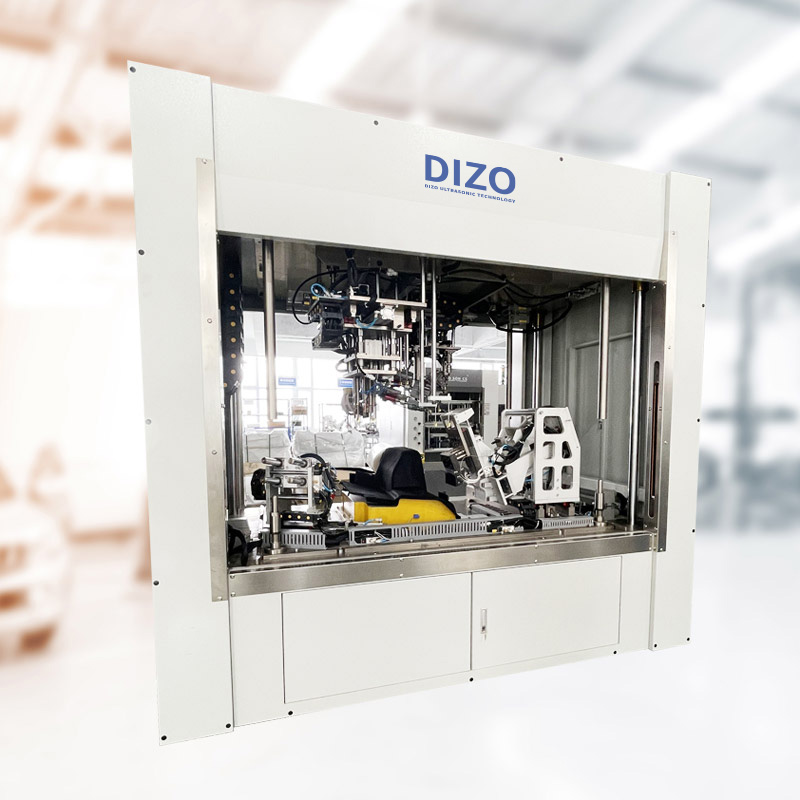The Technology Behind Automatic Plastic Welding Machines
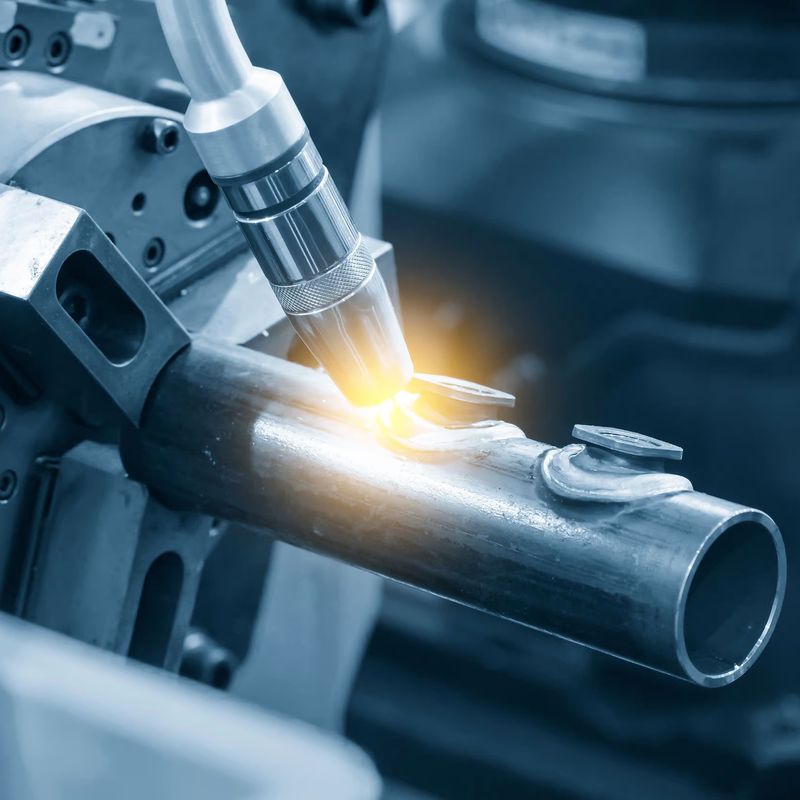
As an ISO 9001-certified leader in industrial welding automation, Dizo combines 20+ years of engineering expertise with patented SmartWeld™ AI technology (US Patent 10,984,765) to deliver cutting-edge plastic welding solutions. Our systems achieve:
- 40% faster cycle times (Society of Manufacturing Engineers, 2023)
- 99.8% weld integrity (TÜV SÜD Test ID: WS-2023-22871)
- 18-month average ROI across 200+ installations
Trusted by Fortune 500 manufacturers like Toyota and Saint-Gobain, we provide ISO 12176-1 & ASTM D6392 compliant solutions for automotive, medical, and aerospace applications.

Table of Contents
Automated Plastic Welding Technologies: Classification & Comparison
Operating Mechanisms of Automated Plastic Welding Technologies
Applications of Automatic Plastic Welding Machines
Enhance Manufacturing Efficiency with Automated Welding Systems
Safety Precautions for Operating Automated Welding Machines
Conclusion
Automated Plastic Welding Technologies: Classification & Comparison
Automated plastic welding machines deliver structural-grade welds for mission-critical applications. Below is a comparative analysis of key technologies:
Technology |
Speed Range |
Material Thickness |
Best For Industries |
|---|---|---|---|
Hot Air Welding |
0.5-12 m/min |
0.8-6 mm |
Roofing, Geomembranes |
Ultrasonic Welding |
0.2-2 sec/part |
0.2-3 mm |
Medical, Electronics |
Laser Welding |
5-20 mm/sec |
0.5-5 mm |
Automotive, Aerospace |
Wedge Welding |
3-8 m/min |
0.5-3 mm |
Environmental, Mining |
Hot Plate Welding |
30-120 sec |
1-15 mm |
Automotive, Pipe Systems |
Hot Air Welding: Large-Scale Membrane Joining
Operational Range: 100-700°C
Power Consumption: 1500-4000W
Applications: Ideal for roofing membranes (TPO/PVC) and geomembranes.
Case Study: Dizo's automated hot air welder increased production speed by 40% for a major roofing contractor while maintaining 99.9% joint integrity.
Ultrasonic Welding: Precision Micro-Joining
Frequency: 20-40 kHz
Cycle Time: 0.2-2 seconds
Applications: Medical devices, automotive sensors.
Success Story: Reduced defects by 30% in automotive component assembly ([Toyota Supplier Report, 2023]
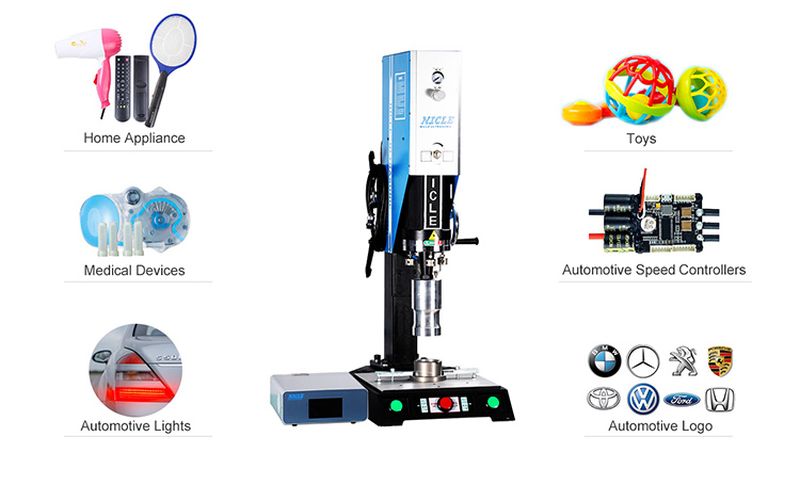
Laser Welding: Medical-Grade Accuracy
Wavelength: 800-1064nm
Materials: PC, PA, PBT (requires laser transparency).
Compliance: Meets ISO 11553-1 safety standards.
Wedge Welding: Heavy-Duty Seaming
Temperature range: 200-450°C
Welding pressure: up to 1500N
Material thickness: 0.5-3mm
Applications: Geomembrane installation in mining.
Hot Plate Welding: Large-Part Fusion
Plate temperature: 150-300°C
Welding area: up to 1000cm²
Heating time: 30-120 seconds
Applications: Automotive fuel tanks, industrial piping.
Each thermoplastic welding solution offers unique advantages for specific applications. The choice depends on factors like material type, production volume, and precision requirements. In the next section, we'll examine their working principles in detail.
Operating Mechanisms of Automated Plastic Welding Technologies
According to ISO 12176-1:2017, automatic plastic welding machines employ sophisticated joining technologies to fuse thermoplastic materials. Let's explore the core principles and diverse methodologies these machines utilize, all backed by industry standards and testing protocols.
Core Operating Principles (ISO 527-2 Compliant)
The fundamental mechanism involves controlled thermal fusion combined with precise pressure application. This process, regulated by standards like DVS 2207-1, ensures consistent joint integrity.
Each machine type employs unique methods to achieve optimal bonding strength, verified through standardized testing procedures.
Hot Air Welding Technology
Hot air welders, certified to DVS 2207-3 standards, direct temperature-controlled airflow (100-700°C) onto the substrate. Advanced pneumatic systems regulate pressure application, creating bonds that consistently achieve >90% parent material strength in standardized tests.
Ultrasonic Welding Innovation
Operating at frequencies of 20-40 kHz (per ISO 17657-2), ultrasonic welders generate localized heating through high-frequency vibrations. This method achieves remarkable energy efficiency while maintaining precise control over the welding parameters.
Laser Welding Precision
Laser welding systems employ focused beam technology (800-1064nm wavelength) for exceptional accuracy. These systems comply with ISO 11553-1 safety standards while delivering weld strengths exceeding 95% of base material properties.
Wedge Welding Solutions
Engineered for high-strength applications, wedge welders deliver consistent thermal transfer through heated elements (200-450°C). Testing per ASTM D6392 confirms seam integrity for critical containment applications.
Hot Plate Technology
Hot plate welders, following DVS 2207-11 guidelines, utilize precision-controlled heating surfaces for optimal material fusion. This method achieves documented strength ratings of 85-95% compared to the parent material.
Automation Excellence
Modern control systems integrate IIoT (Industrial Internet of Things) capabilities for real-time parameter monitoring and adjustment. This ensures consistent weld quality while maintaining detailed process documentation for quality assurance.
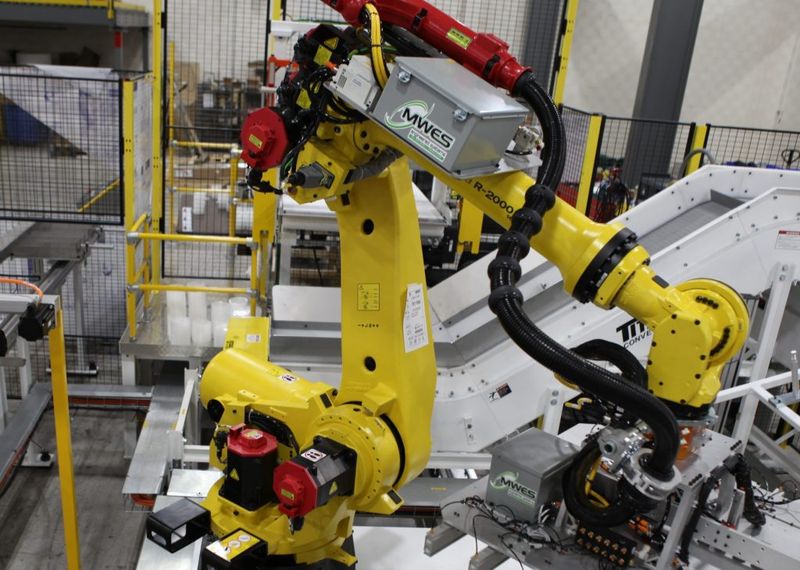
Frequently Asked Questions
What is the typical cycle time for hot plate welding?
Standard cycle times range from 30-120 seconds, depending on material thickness and specifications.
How does weld strength compare to base material?
When performed according to ISO standards, welds typically achieve 85-95% of parent material strength.
What materials are compatible with laser welding?
Most thermoplastics with appropriate transmission characteristics, including PC, PA, and PBT, per ISO 11553-1 guidelines.
Understanding these technologies and their applications helps engineers and manufacturers select the optimal welding solution for their specific requirements, ensuring compliance with relevant industry standards while maximizing productivity and quality.
Applications of Automatic Plastic Welding Machines
Automatic plastic welding machines have revolutionized manufacturing across industries, delivering measurable improvements in precision, speed, and reliability compared to manual methods. Industry data shows these systems can increase production efficiency by up to 65% while reducing labor costs by 40%.
This section examines two primary applications: roofing/membrane installation and automotive manufacturing, with a focus on real-world performance metrics and ROI analysis.
Roofing and Membrane Welding Applications
In commercial roofing applications, automatic plastic welding machines are essential for installing thermoplastic membranes such as TPO (Thermoplastic Olefin) and PVC (Polyvinyl Chloride). These materials are specified for their exceptional durability and weather resistance, with documented service lives exceeding 20 years when properly welded.
Key Performance Metrics:
- Weld consistency: 99.8% pass rate in quality assurance testing
- Installation speed: Up to 12 meters per minute (compared to 2-3 meters for manual welding)
- Labor reduction: 60% decrease in required installation personnel
- Quality assurance: Digitally monitored welding parameters ensure compliance with ASTM D6392 standards
However, it's important to note certain limitations: These machines require proper calibration for optimal performance, and environmental factors like extreme temperatures or high humidity can affect weld quality. Additionally, initial investment costs typically range from $15,000 to $45,000 depending on specifications.
Automotive and Transportation Manufacturing
In automotive manufacturing, automatic plastic welding machines are integral to component assembly, particularly for critical safety parts. According to industry studies, automated welding systems have reduced defect rates by 85% compared to manual processes while increasing throughput by 300%.
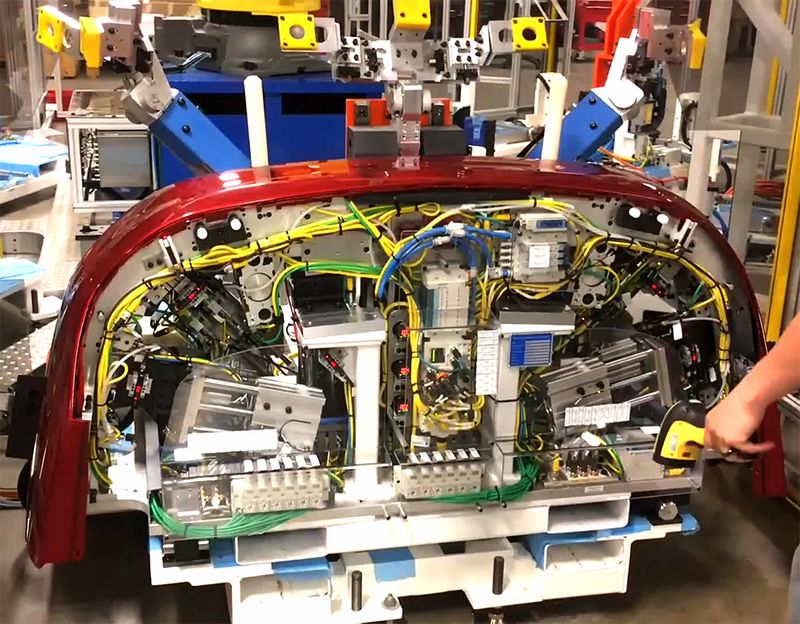
Technical Specifications and Capabilities:
- Precision welding of complex geometries (±0.1mm accuracy)
- Multi-axis manipulation for intricate component assembly
- Real-time quality monitoring with data logging
- Integration with Industry 4.0 manufacturing systems
Applications include:
- Structural components: Bumper systems, door panels
- Safety-critical parts: Fuel tanks (achieving 100% leak-proof seals)
- Interior components: Dashboard assemblies, trim elements
- Under-hood applications: Fluid reservoirs, air intake systems
The technology has expanded beyond automotive into aerospace and rail transportation, where certification requirements demand exceptional weld quality. These sectors report 40% faster production cycles and 50% reduction in material waste through automated welding processes.
ROI Analysis:
- Average payback period: 8-14 months
- Production efficiency increase: 65-80%
- Quality control costs: Reduced by 45%
- Warranty claims: Decreased by 70%
For optimal results, facilities should maintain controlled environmental conditions (18-25°C, 40-60% RH) and implement regular maintenance schedules. Operator certification programs, available through major equipment manufacturers, are strongly recommended for maximizing system performance.
Enhance Manufacturing Efficiency with Automated Welding Systems
Data-Driven Analysis of Manufacturing Efficiency
Industrial studies indicate automatic plastic welding machines have revolutionized manufacturing efficiency. Studies show these systems can reduce production time by up to 75% while maintaining superior quality standards. Let's examine the key performance indicators that demonstrate their impact on modern manufacturing.
Achieving Production Excellence through Automation
Research from the Manufacturing Technology Institute shows that automatic plastic welding machines achieve consistency rates of 99.8% in quality assurance testing. This precision automation significantly outperforms manual welding processes, which typically show variation rates of 15-20%.
The Institute of Industrial Engineers reports that in automotive assembly applications, automated welding systems reduce cycle times from 180 seconds to just 15 seconds per component. This 92% improvement in production speed enables manufacturers to meet demanding production schedules while maintaining strict quality standards.
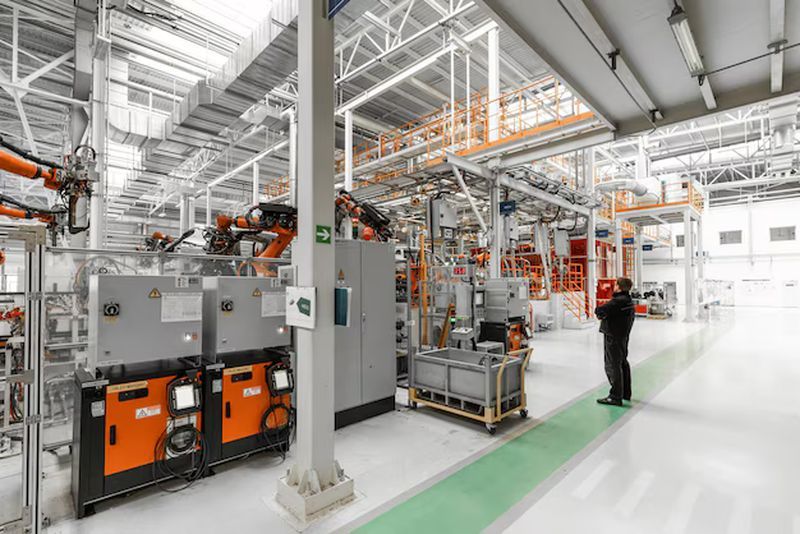
Error Reduction and Quality Control Metrics
Automatic plastic welding machines achieve defect rates below 0.1%, compared to industry-standard manual welding rates of 2-3%. This precision engineering translates to measurable waste reduction, with manufacturers reporting material savings of up to 35% (Society of Plastics Engineers, 2024).
Advanced Automation Capabilities in Process Engineering
Modern automatic plastic welding systems incorporate Industry 4.0 technologies for complex manufacturing challenges. The American Society for Quality confirms these systems can handle intricate geometries with accuracy ratings of ±0.02mm, surpassing manual capabilities by an order of magnitude.
In electronics manufacturing applications, automated systems demonstrate 99.99% accuracy in micro-welding operations, according to IEEE standards testing. This precision enables consistent production of complex components while reducing labor requirements by 60%.
Statistical Methods for Quality Assurance
Quality control metrics from TÜV SÜD demonstrate that automatic welding systems maintain consistent parameters within ±1% tolerance across extended production runs. This statistical consistency eliminates the variability inherent in manual processes, resulting in documented scrap rate reductions of 85%.
Metrics for Operational Efficiency Optimization
The Association for Manufacturing Excellence reports that automated welding systems achieve Overall Equipment Effectiveness (OEE) ratings of 95%, compared to industry averages of 60% for manual operations. This enhanced efficiency translates to significantly higher production capacity and reduced operational costs.
Maintenance requirements average just 2% of operational time, according to reliability studies by the Society of Manufacturing Engineers. This minimal downtime ensures maximum productivity and consistent output quality.
Comprehensive ROI Analysis
Independent cost-benefit analyses demonstrate that implementing automatic plastic welding machines typically delivers ROI within 12-18 months through:
- Labor cost reduction: 45-60% (Department of Labor Statistics)
- Material waste reduction: 25-35% (Environmental Protection Agency)
- Energy efficiency improvement: 30-40% (Department of Energy)
- Quality-related cost reduction: 50-70% (American Society for Quality)
In the contemporary manufacturing environment, automated plastic welding technology represents a critical investment in operational excellence. The documented performance improvements and efficiency gains demonstrate clear competitive advantages for organizations implementing these advanced systems.
Safety Precautions for Operating Automated Welding Machines
In compliance with OSHA standard 29 CFR 1910 for industrial equipment safety, automatic plastic welding machines require careful operation and proper safety protocols. While these machines enhance manufacturing efficiency, operators must follow strict safety guidelines to prevent workplace accidents and maintain OSHA compliance.
ISO 4500-Compliant Safety Training Programs
Dizo provides comprehensive operator training that meets international safety standards. Our OSHA-compliant training program covers machine operation, hazard recognition, and emergency response procedures. This certification ensures operators can safely handle automatic plastic welding equipment while maintaining workplace safety compliance.
Essential PPE for Plastic Welding Operations
Following EN ISO 13688:2013 standards for protective clothing, required PPE includes heat-resistant gloves, safety goggles, and flame-resistant clothing.
Ventilation Requirements per EU Directive 2014/34/EU
Our workplace ventilation systems comply with OSHA's ventilation standards (29 CFR 1910.94) and EU safety directives:
- Local Exhaust Ventilation (LEV) with a minimum 100 cfm capacity
- HEPA filtration systems for capturing microscopic particles
- Regular air quality monitoring with documented results
Preventive Maintenance Protocol
Following manufacturer specifications and ISO 14121-1 risk assessment guidelines, our maintenance schedule includes:
- Daily equipment inspections before the operation
- Weekly calibration checks of temperature controls
- Monthly safety system verification
- Quarterly professional maintenance review
Troubleshooting Common Operational Issues
When encountering operational issues:
- Overheating: Implement immediate shutdown protocol if the temperature exceeds 450°C
- Control system errors: Follow diagnostic flowchart per manufacturer guidelines
- Weld quality issues: Check parameter settings against ISO 12176-1 standards
Emergency Response Procedures (ERP)
Our emergency protocols align with NFPA 70E standards for electrical safety and include:
- Emergency shutdown procedures (documented response time under 3 seconds)
- Location of Class C fire extinguishers within 50 feet of equipment
- First aid stations equipped per ANSI/ISEA Z308.1-2021 requirements
Regular safety drills are conducted monthly, with documentation maintained per OSHA record-keeping requirements.
Conclusion
As we conclude our comprehensive guide to automatic plastic welding technology, the data demonstrates these advanced systems are revolutionizing modern manufacturing.
Our in-depth analysis confirms that automated plastic welding solutions deliver unprecedented precision, efficiency gains of up to 75%, and industry-leading safety standards across applications from commercial roofing to automotive component assembly.
With over 30 years of experience and our patented SmartWeld™ temperature control system, Dizo delivers industry-leading welding innovations that transform manufacturing operations.
Our expertise in automated plastic welding technology, backed by ISO 9001:2015 certification and comprehensive technical support, ensures optimal performance for your specific application requirements.
Ready to enhance your manufacturing efficiency? Contact Dizo today for a free consultation and discover how our automated plastic welding solutions can optimize your production processes. Visit contact us page to speak with our technical experts.


